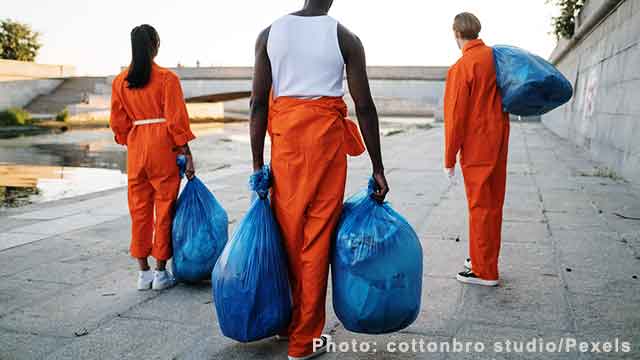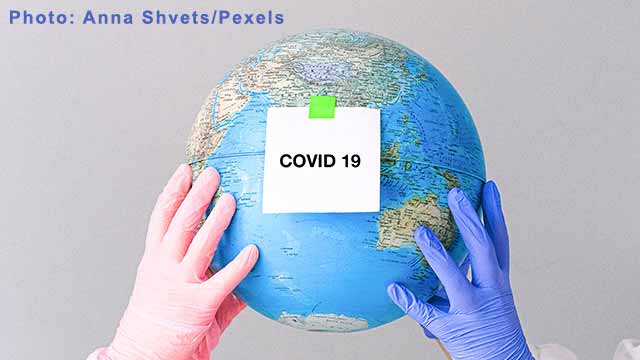The COVID-19 pandemic severely impacted the global tourism industry, causing widespread travel restrictions, border closures, and a sharp decline in international travel. As the world starts to recover and reopen its doors to tourists, there is an opportunity to redefine and evaluate the concept of sustainable tourism in the post-pandemic era. Sustainable tourism, which aims to minimize the negative impacts of tourism on the environment, local communities, and cultural heritage, has become more critical than ever in the pursuit of resilience and responsibility.
Environmental Impacts on the post-COVID-19 tourism industry
The COVID-19 pandemic had significant environmental impacts on the tourism industry, both during the height of the crisis and in the post-pandemic recovery phase. While the pandemic led to a temporary reduction in tourism activities, it also presented an opportunity to reevaluate and reshape the industry’s approach to sustainability and environmental conservation. Below are the key environmental impacts on the post-COVID-19 tourism industry:
Reduction in Carbon Emissions: The pandemic resulted in a significant decline in air travel and road transportation, leading to a temporary reduction in carbon emissions from the tourism sector. This period of reduced travel allowed for a glimpse of the potential environmental benefits that could be achieved through more sustainable travel practices.
Impact on Wildlife and Biodiversity: With reduced human activities and tourism in certain regions, wildlife and natural ecosystems had a chance to recover. Some popular tourist destinations experienced less human disturbance, providing a respite for local flora and fauna. However, the reopening of tourism also raised concerns about the potential for increased impacts on fragile ecosystems.

Waste Management and Single-Use Plastics: The increased use of personal protective equipment (PPE) during the pandemic, such as masks and gloves, led to an uptick in plastic waste generation. Proper waste management of single-use plastics in the tourism industry became a pressing issue, as discarded PPE items and other disposable products posed risks to the environment, particularly marine ecosystems.
Water Quality and Conservation: The sudden drop in tourist numbers allowed for a temporary improvement in water quality in some tourist destinations, especially those with heavy water usage from hotels and resorts. However, the post-pandemic resurgence of tourism raised concerns about water conservation and sustainable water management practices.
Preservation of Natural Attractions: The reduced footfall during the pandemic provided an opportunity for certain natural attractions to recover from overtourism and minimize human impact. As tourism resumes, it becomes crucial to implement sustainable visitor management strategies to protect these delicate sites and prevent overcrowding.
Impact on Coastal Areas: Coastal destinations heavily reliant on tourism experienced both negative and positive effects. On one hand, reduced tourism resulted in cleaner beaches and less pollution in marine environments. On the other hand, coastal communities that depend on tourism suffered economically during the pandemic, raising concerns about long-term sustainability.
Sustainable Accommodations and Infrastructure: The pandemic highlighted the need for more sustainable practices in the tourism industry, particularly in accommodations and infrastructure. Energy-efficient hotels, eco-lodges, and green building designs became more relevant as businesses sought to reduce their carbon footprint.
Responsible Wildlife Tourism: The pandemic raised awareness about the ethical treatment of wildlife in tourism. With travel restrictions affecting wildlife tourism, there was an opportunity to reassess and promote responsible wildlife experiences that prioritize animal welfare and conservation.
Community Engagement and Local Economies in post-COVID-19 tourism
Community engagement and the revival of local economies are critical components of post-COVID-19 tourism recovery. The pandemic had a profound impact on communities heavily dependent on tourism, leading to widespread job losses and economic hardships. As tourism starts to rebound, it becomes essential to prioritize community well-being and empowerment. Here’s a detailed explanation of community engagement and local economies in post-COVID-19 tourism:
Supporting Local Businesses: Post-pandemic tourism should focus on supporting local businesses, including hotels, restaurants, tour operators, and artisans. Encouraging tourists to spend on locally produced goods and services ensures that a significant portion of the tourism revenue remains within the community, contributing to economic growth and stability.
Community-Based Tourism Initiatives: Community-based tourism initiatives empower local communities to actively participate in and benefit from the tourism industry. By involving communities in decision-making, cultural exchanges, and sustainable development projects, tourism becomes a collaborative endeavor that fosters a sense of ownership and pride among community members.
Job Creation and Economic Diversification: Tourism can play a vital role in job creation and economic diversification in rural and remote areas. Post-COVID-19 tourism strategies should focus on equipping local communities with the skills and resources needed to participate in various tourism-related activities, from hospitality and guiding to handicraft production and sustainable agriculture.
Empowering Women and Marginalized Groups: Tourism can be a powerful tool for gender equality and social inclusion. Post-pandemic tourism initiatives should prioritize empowering women and marginalized groups by providing them with equal opportunities for employment and participation in tourism-related businesses.
Responsible Tourism Development: Community engagement should be at the core of responsible tourism development. Consulting with local communities about tourism projects and ensuring their consent is obtained before implementation helps to mitigate negative impacts and ensures that tourism benefits are shared equitably.
Preservation of Cultural Heritage: Post-COVID-19 tourism should celebrate and preserve the cultural heritage of host communities. By promoting authentic cultural experiences and supporting traditional crafts, music, and festivals, tourism can become a force for cultural preservation and identity.
Capacity Building and Training: Capacity building and training programs are essential to enhance the skills and knowledge of community members involved in tourism. Training in sustainable practices, hospitality, customer service, and environmental conservation can elevate the quality of tourism experiences and bolster community resilience.
Community Investment and Social Initiatives: Responsible tourism operators can invest a portion of their profits in community development projects, such as education, healthcare, infrastructure, and environmental conservation. These investments not only benefit the community directly but also contribute to the overall attractiveness of the destination to tourists.
Tourism Revenue Distribution: Ensuring that tourism revenue is distributed fairly among community members is crucial for sustainable development. Transparent revenue-sharing mechanisms and inclusive governance structures help prevent income disparities and ensure that all members of the community benefit from tourism.
Resilient Supply Chains in post-COVID-19 tourism

Resilient supply chains are essential in the post-COVID-19 tourism landscape to cope with disruptions, ensure business continuity, and enhance the industry’s ability to adapt to changing circumstances. The pandemic exposed vulnerabilities in traditional supply chain models, emphasizing the need for flexibility, diversification, and sustainability. Here’s an in-depth explanation of resilient supply chains in post-COVID-19 tourism:
Regionalization and Diversification: Post-pandemic tourism supply chains should prioritize regionalization and diversification. Reducing reliance on a single source or region for critical goods and services enhances the industry’s ability to withstand localized disruptions and reduce transportation risks.
Local Sourcing and Procurement: Supporting local suppliers and businesses becomes crucial in building resilient supply chains. By sourcing products and services locally, the tourism industry can contribute to the economic development of the regions it operates in while minimizing disruptions caused by global events.
Digital Solutions and Real-Time Visibility: Adopting digital technologies for real-time visibility into supply chain operations is fundamental. Cloud-based platforms, data analytics, and Internet of Things (IoT) devices enable businesses to respond quickly to disruptions, optimize inventory, and improve overall supply chain efficiency.
Collaboration and Partnerships: Collaboration among stakeholders in the tourism supply chain, including hotels, airlines, tour operators, and local communities, is vital for resilience. Partnerships facilitate the sharing of resources, information, and best practices, allowing the industry to collectively address challenges and enhance preparedness.
Contingency Planning and Risk Management: Post-pandemic tourism supply chains should implement robust contingency plans and risk management strategies. Anticipating potential disruptions and having contingency measures in place ensures swift responses to unforeseen events, minimizing their impact on operations.
Sustainable Supply Chain Practices: Integrating sustainability into supply chain practices contributes to overall resilience. Sustainable sourcing, waste reduction, energy efficiency, and responsible procurement help build long-term resilience by conserving resources and minimizing the industry’s ecological footprint.
Lean Inventory Management: Optimizing inventory levels and adopting lean inventory management practices reduce carrying costs and minimize waste. Lean supply chains enable businesses to respond quickly to changes in demand while avoiding overstocking.
Flexible Logistics Solutions: Post-COVID-19 tourism requires flexible logistics solutions to adapt to dynamic travel patterns. Collaborating with multiple logistics providers, exploring alternative transportation options, and employing dynamic route planning help ensure smooth operations even in uncertain conditions.
Scenario Planning and Preparedness: Scenario planning exercises aid in identifying potential risks and developing appropriate responses. By conducting regular simulations and preparedness drills, the tourism industry can improve its ability to handle crises effectively.
Circular Economy and Waste Reduction: Embracing circular economy principles in tourism supply chains contributes to resilience by reducing waste and reusing resources. Sustainable waste management practices, such as recycling and composting, minimize environmental impacts and enhance overall efficiency.
Health and Safety Measures in the post-COVID-19 tourism
In the post-COVID-19 tourism era, health and safety measures have become paramount to rebuild traveler confidence and ensure the well-being of tourists, employees, and local communities. The pandemic has highlighted the need for stringent protocols to prevent the spread of infectious diseases and safeguard public health. Here’s an in-depth explanation of the health and safety measures in the post-COVID-19 tourism era:

Enhanced Sanitization and Cleaning: Thorough and regular sanitization of public spaces, accommodations, transportation vehicles, and high-touch surfaces is essential. The use of approved disinfectants and cleaning protocols helps minimize the risk of virus transmission.
Contactless Services: To reduce physical contact, contactless services such as mobile check-ins, digital payments, and online reservations should be encouraged. Adopting technology for keyless entry, contactless dining, and touchless payment options minimizes touchpoints for travelers.
Social Distancing: Implementing social distancing measures in tourist attractions, transportation, and accommodation facilities is crucial. This may include reduced capacity, rearrangement of seating, and floor markings to maintain appropriate distances between individuals.
Health Screenings: Conducting health screenings, temperature checks, and health declarations at entry points can help identify potential cases and prevent the spread of the virus. Travelers showing symptoms or having been exposed to the virus may be isolated and guided to appropriate medical facilities.
Personal Protective Equipment (PPE): Requiring the use of PPE, such as masks and gloves, in public areas and enclosed spaces helps protect travelers and employees. Providing PPE to tourists and staff members who may not have access to it further ensures compliance.
Staff Training: Comprehensive training for tourism industry personnel is essential to understand health and safety protocols and ensure consistent implementation. Employees should be educated on proper hygiene practices, social distancing, and how to handle potential health emergencies.
Health Care Facilities and Services: Ensuring access to healthcare facilities and services for both tourists and local communities is crucial. The availability of medical facilities and trained personnel enhances the industry’s ability to respond to health emergencies promptly.
Communication and Information: Transparent communication with travelers is vital to inform them about health and safety measures in place. Providing updated information on local health regulations, travel restrictions, and safety guidelines empowers travelers to make informed decisions.
Destination Preparedness Plans: Developing destination preparedness plans in collaboration with local authorities, tourism stakeholders, and health experts ensures a coordinated response to potential outbreaks. These plans outline protocols for containment, contact tracing, and communication with tourists.
Public Awareness Campaigns: Raising public awareness through campaigns and informational materials educates both tourists and local communities about preventive measures and responsible travel behavior. These campaigns promote a culture of responsibility and compliance with health guidelines.
Responsible Tourism Education in the post-COVID-19
Responsible tourism education in the post-COVID-19 era plays a crucial role in promoting sustainable and ethical practices among tourists, businesses, and local communities. The pandemic has underscored the importance of responsible travel behavior and highlighted the need for greater awareness about the environmental, social, and cultural impacts of tourism. Here’s an in-depth explanation of responsible tourism education in the post-COVID-19 era:
Environmental Awareness: Responsible tourism education emphasizes the importance of environmental conservation and minimizing the ecological footprint of travel. Tourists are educated about the significance of preserving natural habitats, reducing waste, and respecting wildlife. They are encouraged to choose eco-friendly accommodations and participate in eco-tourism activities that support environmental conservation.
Cultural Sensitivity: Responsible tourism education promotes cultural sensitivity and respect for local traditions, customs, and beliefs. Tourists are educated about appropriate behavior in different cultural settings to avoid cultural misunderstandings and preserve the cultural heritage of host communities.
Ethical Wildlife Tourism: The post-COVID-19 era focuses on responsible wildlife tourism, discouraging activities that exploit or harm animals for entertainment. Tourists are educated about ethical alternatives, such as visiting reputable sanctuaries and observing wildlife in their natural habitats.
Sustainable Travel Practices: Responsible tourism education encourages tourists to adopt sustainable travel practices. This includes reducing plastic waste, conserving water and energy, using public transportation, and supporting local businesses to minimize the environmental impact of travel.
Community Engagement: Tourists are educated about the importance of engaging with local communities in a respectful and responsible manner. They are encouraged to support local economies, respect local customs, and participate in community-based tourism initiatives that empower local communities.
Health and Safety Protocols: Responsible tourism education includes information about health and safety protocols, encouraging tourists to comply with guidelines to protect their health and the health of others. This includes practicing good hygiene, wearing masks, and adhering to social distancing measures.
Supporting Sustainable Tourism Businesses: Tourists are educated about the importance of supporting sustainable tourism businesses that prioritize environmental and social responsibility. They are encouraged to choose accommodations, tour operators, and businesses that have eco-certifications and engage in responsible practices.
Responsible Adventure Tourism: Responsible tourism education highlights the importance of responsible adventure tourism, which involves minimizing environmental impact and respecting local cultures and traditions while engaging in adventurous activities.
Destination-Specific Guidelines: Responsible tourism education provides destination-specific guidelines to tourists, informing them about local laws, customs, and cultural sensitivities. This helps tourists make informed decisions and adapt to the local context.
Traveling with Empathy and Compassion: Responsible tourism education fosters a sense of empathy and compassion among tourists. Travelers are encouraged to be mindful of the social and economic impacts of their actions and to engage with local communities in a way that benefits both visitors and hosts.
Technology and Innovation in post-COVID-19 tourism
Technology and innovation have become integral to the post-COVID-19 tourism landscape, reshaping the industry to adapt to the new normal and enhance traveler experiences. The pandemic accelerated the adoption of digital solutions and innovative technologies to ensure safety, efficiency, and sustainability. Here’s an in-depth explanation of technology and innovation in post-COVID-19 tourism:
Contactless Solutions: Contactless technologies have gained prominence to minimize physical interactions and reduce the risk of virus transmission. Mobile apps for check-ins, digital payments, and touchless kiosks in airports and hotels enable a seamless and hygienic travel experience.
Digital Health Passports: Digital health passports have emerged as a vital tool to verify travelers’ health status, including vaccination records and COVID-19 test results. These passports facilitate safe and hassle-free international travel while ensuring compliance with health regulations.
Real-Time Travel Information: Technology allows travelers to access real-time travel information, including updates on travel restrictions, health advisories, and safety guidelines. Mobile apps and websites provide up-to-date information, helping travelers make informed decisions.
Virtual Tours and Experiences: Virtual reality (VR) and augmented reality (AR) have enabled virtual tours and experiences, allowing travelers to explore destinations and attractions from the comfort of their homes. These technologies offer an alternative to physical travel while maintaining engagement with destinations.
Internet of Things (IoT) in Hospitality: IoT applications in hospitality enable smart hotel rooms, where guests can control lighting, temperature, and other amenities through their smartphones. IoT sensors can also monitor occupancy levels and facilitate social distancing in shared spaces.

Artificial Intelligence (AI) in Customer Service: AI-powered chatbots and virtual assistants have become essential for customer service in the tourism industry. They provide instant responses to inquiries, handle bookings, and offer personalized recommendations to enhance the customer experience.
Data Analytics for Demand Forecasting: Data analytics plays a crucial role in forecasting travel demand and adapting pricing and availability in real-time. This helps businesses optimize revenue while managing capacity constraints during the post-pandemic recovery.
Biometrics and Touchless Security: Biometric technologies, such as facial recognition and fingerprint scanning, enable touchless security checks at airports and other travel points. These solutions enhance security while minimizing physical contact.
Sustainability Tracking and Reporting: Technology facilitates the tracking and reporting of sustainability metrics in the tourism industry. From carbon emissions monitoring to waste reduction, digital tools enable businesses to measure and improve their environmental performance.
Smart Destination Management: Smart destination management systems integrate various technologies to optimize tourist flow, manage crowds, and provide personalized recommendations to visitors. These systems enhance the overall travel experience and ensure more efficient use of resources.
FAQ’s
-
How has technology influenced post-COVID-19 tourism?
Technology has driven contactless solutions, digital health passports, virtual tours, AI-powered customer service, and smart destination management, enhancing safety and efficiency in travel.
-
What role does data analytics play in the tourism industry?
Data analytics helps forecast travel demand, optimize pricing, and manage capacity constraints during the post-pandemic recovery, ensuring businesses can adapt to changing conditions.
-
How does virtual reality impact the travel experience?
Virtual reality offers virtual tours and experiences, allowing travelers to explore destinations remotely and maintain engagement with destinations amid travel restrictions.
-
What benefits do smart destination management systems offer?
Smart destination management systems optimize tourist flow, manage crowds, and provide personalized recommendations to enhance the overall travel experience and resource utilization.
-
How has technology enhanced sustainability in tourism?
Technology facilitates sustainability tracking, carbon emissions monitoring, and waste reduction efforts, enabling businesses to measure and improve their environmental performance.
